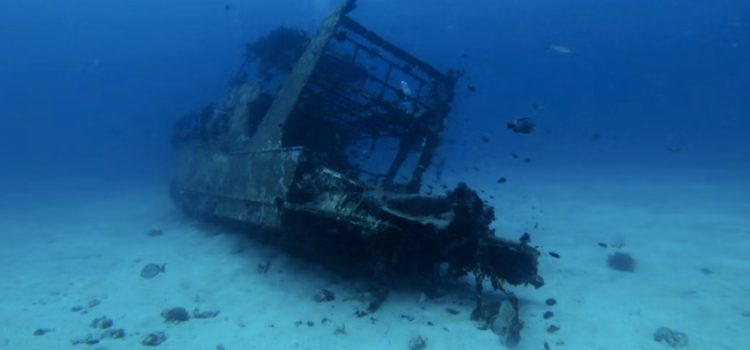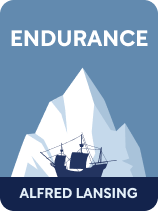

This article is an excerpt from the Shortform book guide to "Endurance" by Alfred Lansing. Shortform has the world's best summaries and analyses of books you should be reading.
Like this article? Sign up for a free trial here .
What was the first sign that the Endurance was going to sink? How did Ernest Shackleton handle the Endurance shipwreck?
In 1914, Ernest Shackleton and his crew set out on a ship to Antarctica. But they got trapped in between two ice floes and the ice slowly destroyed their ship.
Check out what Alfred Lansing’s book Endurance has to say about what caused the Endurance shipwreck.
Dealing With the First Problems
The beginning of the Endurance shipwreck began on January 16, 1915. On this day, the Endurance became trapped between ice floes. For two days, they couldn’t move because of a powerful gale. However, the gale moved the ice and on January 18, they passed through the floes. But in the afternoon of the same day, they found themselves trapped again, this time by a soft, snow-like pack. They could see the open ocean on the other side, so they tried to get through but again ended up trapped between two ice floes.
Over the next six days, the gale packed ice all around the Endurance. A powerful wind from the north had moved the packs in the direction of the continent. The only way out for the Endurance was an equally powerful gale from the south.
Giving Up on the Mission
On February 24, Shackleton told his crew they would have to spend the winter trapped between the ice floes. It was an acknowledgment that they wouldn’t achieve their goal of traversing the continent. Lansing recounts how Shackleton expressed regret in his diary for not getting the transcontinental party on land sooner.
They couldn’t get to Vahsel Bay any longer, even though they were only about 60 miles away. But even if Shackleton led the transcontinental party across the ice pack to Vahsel Bay along with the necessary food stores, gear, and dogs, he couldn’t leave the Endurance and the rest of his crew at the mercy of the ice. He hid his disappointment from most of his crew and led the process of getting the ship ready for the polar night in an upbeat spirit.
Living Through the Polar Night
The polar night began as the sun disappeared in early May. Lansing describes how, from the time they had gotten stuck until the beginning of the polar night, the ice pack trapping the Endurance grew to about one million square miles. It drifted about 130 miles from its original location.
(Shortform note: The Antarctic polar night refers to the months-long period when the South Pole is completely hidden from the sun and as a result gets no sunlight. It has negative effects on humans, such as vitamin D deficiency and seasonal affective disorder.)
Surviving the Ice Pack’s Pressure
On July 16, they saw that the ice pack had fragmented. The individual floes on the pack moved with the wind, creating pressure on the floe surrounding the Endurance and on the ship itself. Around them, ice floes crashed into each other continuously, lifting into the air. Throughout August of 1915, the Endurance withstood the ice. Lansing believes this gave the men confidence that the Endurance could survive anything and no shipwreck would occur.
(Shortform note: The polar ice packs consist of pieces of ice that freeze together at different points in time, called ice cakes (less than 66 feet in diameter) or ice floes (larger than 66 feet). The pieces of ice drift together or separate, driven by the current and wind (often in Antarctica the wind and current don’t go in the same direction). The ice pack’s pressure refers to the force each individual piece exerts on neighboring pieces, creating pressure ridges (small mountain ranges of ice) or fragments, depending on the conditions of the ice.)
Abandoning the Endurance
Despite the men’s optimism, the ice pack struck the ship with increasing intensity several times, tearing its sides. Finally, on October 23, the Endurance became trapped by three ice floes that split it in half. Lansing recounts how the crew tried for three days to save the ship.
On the second day, the side of the ship was completely deformed by the ice. Shackleton ordered the men to lower all the essential items onto a nearby floe. On day three, more water reached the deck and froze there, weighing the ship down.
On October 27, 1915, nine months after the ship got stuck in the ice, they realized it was a losing battle and decided to leave the ship. They took 49 huskies, essential gear, and two lifeboats down to the ice. They set up camp on a floe, but they quickly had to move again when it started breaking up. Lansing describes how, less than an hour after the last man had gotten off the ship, a piece of ice pierced the side of the Endurance, and the water coming in caused it to partly submerge.
They were now in the Weddell Sea, halfway between the South Pole and the nearest populated town 1,200 miles away. Shackleton planned to get to Paulet Island, which was 346 miles away—in 1903, the crew of another ship crushed by ice had awaited rescue there, and they had left stores of food on the island in case anyone else found themselves stranded in the region.
On November 21, they saw the Endurance disappear entirely below the ice and water—their last connection to civilization and the only thing other than ice as far as the eye could see. The Endurance shipwreck wouldn’t be found until March 22 by a group of scientists.

———End of Preview———
Like what you just read? Read the rest of the world's best book summary and analysis of Alfred Lansing's "Endurance" at Shortform .
Here's what you'll find in our full Endurance summary :
- The story of the Endurance, an expedition ship that sunk on its way to Antarctica
- The crew's journey of survival and their search for rescue
- How Ernest Shackleton lead the crew to safety






